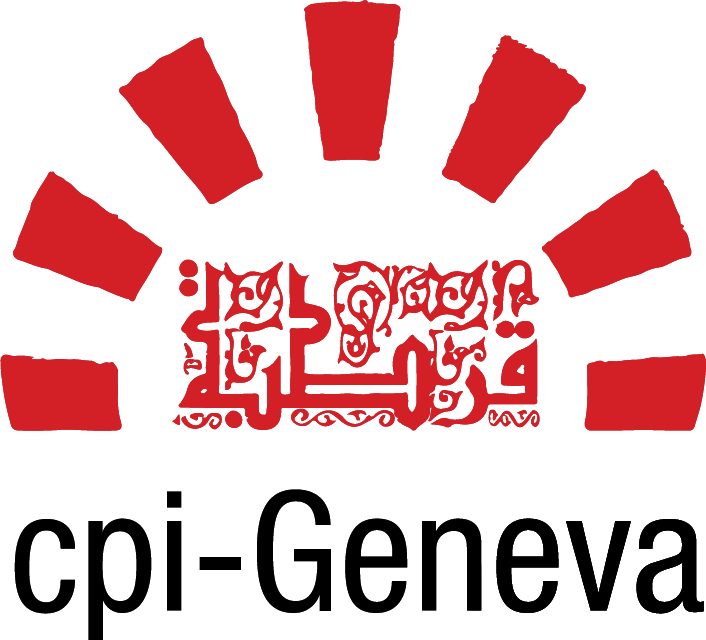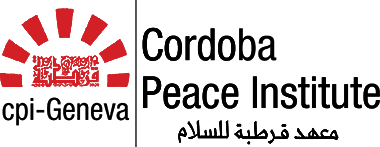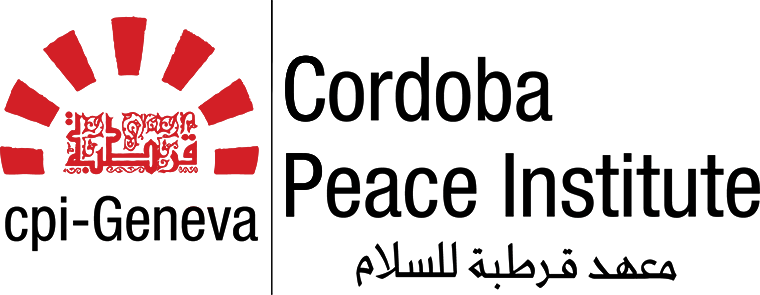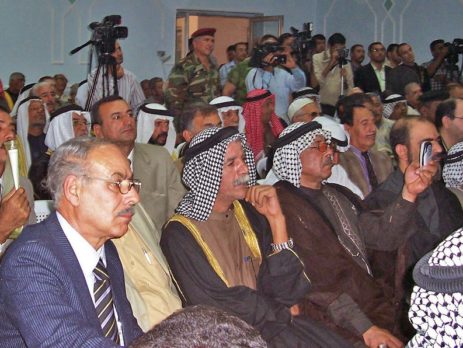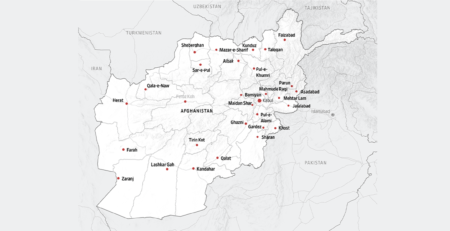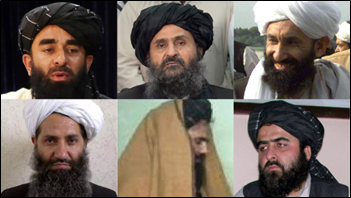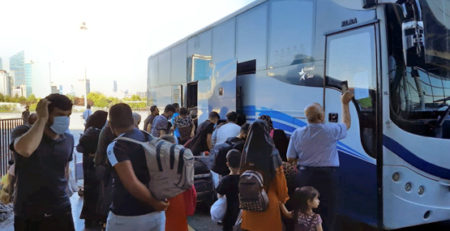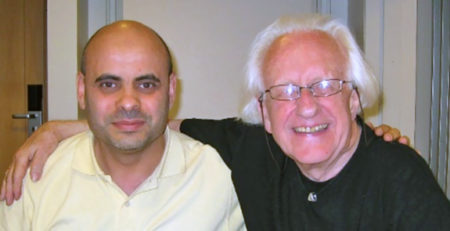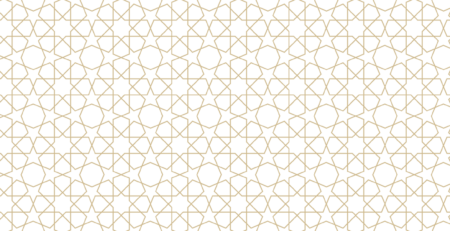Processes Engaging Iraqi Tribal Actors in Consolidating Peace – a Review
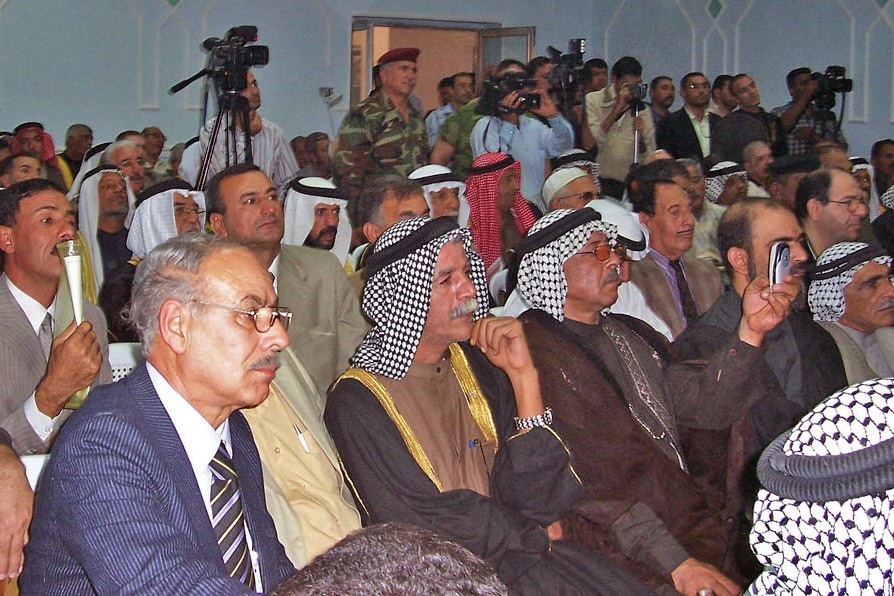
by Kheira Tarif
In the context of the Cordoba Foundation of Geneva’s Middle East Program, a discussion with Iraqi partners fostered the idea of working with tribal and religious leaders as influential actors of change and reconciliation in the country. Strengthening locally-accessible and legitimate dispute resolution mechanisms can help stem the escalation of local tensions in Iraq, and detract from the rationale of violent alternatives…
by Kheira Tarif
In the context of the Cordoba Foundation of Geneva’s Middle East Program, a discussion with Iraqi partners fostered the idea of working with tribal and religious leaders as influential actors of change and reconciliation in the country. Strengthening locally-accessible and legitimate dispute resolution mechanisms can help stem the escalation of local tensions in Iraq, and detract from the rationale of violent alternatives. Investing in the ‘peace infrastructure’ of tribal actors and networks is seen as a mechanism for reinforcing broader, nation-wide peace processes. The resulting project aims at addressing the marginalisation of influential Iraqi actors, fostering mutual trust and promoting a peaceful and inclusive shared civil space. Its preliminary phase, launched in February 2017, focuses on defining the most appropriate approach to the process. The preparations have involved research into the actors likely to be approached for this process, as well as a review of previous processes that have engaged tribal leaders in working towards the consolidation of peace. A portion of the latter work is published below.
Tribes are widely understood as a core constituency of the Iraqi nation, but are perceived as a controversial social group by both international and national actors. International observers have often emphasized tribes’ patriarchal nature and their conservative religious and social values as negative aspects of tribal culture; in addition, national elites in civil society and government have viewed tribes with suspicion, due to the view that they could represent a parallel state structure which might threaten national security, integrity and cohesion.1 Despite this controversy, the deficiency (or absence) of state structures and systems underlying the social contract between citizen and state in Iraq has ensured that tribes continue to play an important role.2
Iraqi tribes have played an often-understated part in transforming tensions in the context of political, religious and inter-community violence. As one researcher explained, following the US-led intervention in 2003, a local Iraqi sheikh with political and tribal contacts “was useful in a way that political leaders sequestered in walled compounds or the International Zone seldom were for average Iraqis.” 3 Certainly, following one of the deadliest periods of sectarian violence in Iraq, in 2006-2007, Baghdad’s tribal leaders were active in dispute resolution within and between Sunni and Shia communities, acting independently from local authorities, the central government or international peace actors.4
Broader recognition of the potential advantages of engaging traditional leaders and methodologies in Iraqi peace processes has resulted in demonstrable, if infrequent, examples since 2003. Notably, advocacy for tribal engagement in peacebuilding has been increasingly evident since the meteoric rise of the ‘Islamic State’ armed group in 2014, and tribal actors and networks have been recognized as presenting the possibility of strengthening community relations and local-level peace agreements, feeding into the elusive nation-wide project for reconciliation in Iraq.
The United States Institute for Peace (USIP) has supported three mediation initiatives between tribal leaders and other representatives of Iraqi society since the US-led international intervention in Iraqi, in 2003. The first took place in 2007, in Mahmoudiya; the second in 2014, in the aftermath of the Camp Speicher massacre; the third in 2017, in the multifaceted and contested province of Kirkuk. All three initiatives featured the engagement of local NGOs: Sanad for Peacebuilding and the Network of Iraqi Facilitators (NIF).
The 2007 Mahmoudiya Tribal Reconciliation Initiative5 brought together 31 tribal representatives from the eponymous neighbourhood, south of Baghdad, dubbed the “Triangle of Death”. This initiative facilitated local tribal leaders to meet, dialogue and produce consensus on how to advance their local, mixed communities in the context of a violent, asymmetrical conflict. USIP described this process as a joint project, incorporating Sunni and Shia tribal leaders, government officials, civil society actors, a US Army Brigade, and 8 Iraqi facilitators. Over two days of dialogue, local leaders from Mahmoudiya agreed on 37 points for a three-year plan, supporting reforms in local governance; the rule of law; the economy and social well-being; and for collaborating with local government and security authorities.6 In the immediate aftermath of the accord, observers noted the sharp fall in causalities in the neighbourhood of these tribal actors, followed by the successful return of many exiled tribal leaders to their communities. The relative stability in the Mahmoudiya area since the conclusion of this dialogue has been cited as proof of the potential benefits of tribal engagement in dialogue and mediation in Iraq.7
The 2014 USIP-supported Camp Speicher mediation followed the infamous massacre and aimed to reduce tensions between tribes that were apparently implicated or adversely affected by the ‘Islamic State’ attack on Iraqi air force cadets and soldiers in June 2014.8 This initiative sought to address the threat of revenge killings and sectarian violence between Iraqis in the Tikrit area, in the aftermath of the massacre. The grounds for this process were prepared through individual and intra-community dialogues with tribal leaders, religious bodies, civil society actors, government agencies and UN representatives, finally establishing a committee of 16 tribal leaders representing both sides of the dispute.9 Dialogues were followed by a conference of tribal leaders, which resulted with two tribes accused of complicity with Islamic State group – al-Bu Ajeel and al-Bu Nassir – publically refuting their involvement in the Camp Speicher massacre and committing to cooperate with Iraqi authorities in bringing the guilty parties to justice.10 Furthermore, the initiative reportedly had an impact beyond the cessation of hostilities between tribal actors. It facilitated improved relations with “tribal sheikhs, militias and government officials,” which “had unlocked another door – the prospect that families who’d (sic) fled Tikrit… could return.”11 As relations improved among local leadership, some 400 Sunni families safely returned to their communities, escorted by members of the popular mobilisation forces.12 According to USIP, within weeks, more than 1,000 families were able to return.13
The 2017 Kirkuk agreement, between 51 tribal leaders and local authorities, aimed to pre-empt revenge killings of Islamic State group collaborators, along with other perceived negative cultures pertaining to tribal justice.14 This initiative sought to shift tribal leaders’ “perspective on the value of official justice mechanisms” through a series of dialogues and consultations between tribal leaders and government officials, facilitated by Sanad and NIF. In particular, the process targeted tribal leaders who had been displaced by the Islamic State group from the Hawija region. The process reportedly elicited a number of outcomes, including tribal leaders’ adherence to international human rights, condemnation of terrorism, renouncing political and religious extremism, eschewing tribal forms of retribution, and supporting official justice systems and law enforcement authorities.15 As reported by the Emir of the al-Nu’aim Tribe, the Kirkuk Agreement positively reinforced “the role of tribes in achieving security and peace amongst the Iraqi community;” while a USIP officer opined that it contributed to the short-term stabilisation of the province, as well as the longer-term strength of Iraq’s government institutions, by improving relations between the state and traditional leaders. According to USIP, the initiative’s success is demonstrated by the exponential growth in tribal signatories to the agreement, which doubled in the six months following its announcement.
These three initiatives demonstrate the development of tribal inclusion in peacebuilding in Iraq. The 2007 Mahmoudiya initiative demonstrated attempts to redress the frayed relations between religious communities in the context of a new political order, through the medium of tribal representatives. The subsequent Camp Speicher and Kirkuk mediations are indicative of the potential role for tribal actors in bridging the divide between communities that have been on the receiving end of Islamic State group’s violence. Furthermore, where the Camp Speicher mediation in 2014 focused on reducing tensions between religious communities in the Tikrit region, the 2017 Kirkuk Agreement featured a longer-term focus of pre-empting violence between local religious and ethnic groups. This suggests a development in the appreciation of the role of Iraqi tribes, from parties to conflict, to victims of conflict, to potential peacebuilders within society.
A forthcoming research paper entitled “Tribes and Religious Institutions in Iraq” – written by Dr Renad Mansour on behalf of the Cordoba Foundation of Geneva – expands on the existing information about Iraqi tribes by identifying key tribal and religious actors and exploring the role of their networks. English and Arabic versions of this paper will be published on the Foundation’s website in autumn 2017.
(*) For further details on the Middle East Program, please contact Catherine Germond (catherine.germond@cordoue.ch)
_________________________
1 Al-Musawi, N.A. (23 June 2015)
“الموقف القانوني من الاعراف العشائرية السلبية”
(The Legal Position on Negative Tribal Customs). Iraq High Court. Available at: www.iraqja.iq/view.2877/
2 Bassem, W. (30 October 2015) “When Conflict Arises, These Iraqis Go to the Madeef.” Al Monitor. Available at: http://www.al-monitor.com/pulse/originals/2015/10/iraq-madeef-tribes-host-disputes-politicans.html
3 Carroll, K.B. (2011) “Tribal Law and Reconciliation in the New Iraq,” The Middle East Journal, 65(1). 21-22. Available at: https://muse.jhu.edu/article/416660/pdf
5 “Iraq: Mahmoudiya Tribal Reconciliation Initiative.” (14 November 2007) United States Institute of Peace. Available at: https://www.usip.org/publications/2007/11/iraq-mahmoudiya-tribal-reconciliation-initiative
6 “Mahmoudiya: Cornerstone for Peace and National Accord.” (2007) United States Institute of Peace. Available at: https://www.usip.org/sites/default/files/file/mahmoudiya_accord.pdf
7 “In Iraq’s Former ‘Triangle of Death,’ a Decade of Stability. An Anniversary of Reconciliation in Mahmoudiya Shows How Peace Is Possible.” (9 August 2017) United States Institute of Peace. Available at: https://www.usip.org/publications/2017/08/iraqs-former-triangle-death-decade-stability
Lindborg, N. (27 June 2017) “To Stabilize Iraq After ISIS, Try a Method That Worked.” United States Institute of Peace. Available at: https://www.usip.org/publications/2017/06/stabilize-iraq-after-isis-try-method-worked
8 Gienger, V. (16 July 2015) “In the Shadow of a Massacre, a Peaceful Return in Iraq: USIP Partners Ease Tensions Over 2014 Slaughter by Islamic State.” United States Institute of Peace. Available at: https://www.usip.org/sites/default/files/In-the-Shadow-of-a-Massacre_a-Peaceful-Return-in-Iraq_0.pdf
9 “Speicher Conflict Intervention.” Sanad for Peacebuilding. Available at: http://sanad-iq.org/?project=speicher-intervention
10 “Press Release: The Press Conference for Albu Ajeel and Albu Nassir tribal leaders regarding Speicher Base Massacre.” (28 April 2015) Sanad for Peacebuilding. Available at: http://sanad-iq.org/wp-content/uploads/2015/09/Press-release-English.pdf
11 Gienger, V. (16 July 2015) “In the Shadow of a Massacre, a Peaceful Return in Iraq: USIP Partners Ease Tensions Over 2014 Slaughter by Islamic State.” United States Institute of Peace. Available at: https://www.usip.org/sites/default/files/In-the-Shadow-of-a-Massacre_a-Peaceful-Return-in-Iraq_0.pdf
12 “400 Internally Displaced Families Return Home to Tikrit City – Salahaddin Province in Iraq.” (23 June 2015) Sanad for Peacebuilding. Available at: http://sanad-iq.org/wp-content/uploads/2015/11/NIF-Sanad-USIP-Help-400-Internally-Displaced-Families-Return-Home-to-Tikrit-City-June-23-2015.pdf
13 Gienger, V. (16 July 2015) “In the Shadow of a Massacre, a Peaceful Return in Iraq: USIP Partners Ease Tensions Over 2014 Slaughter by Islamic State.” United States Institute of Peace. Available at: https://www.usip.org/sites/default/files/In-the-Shadow-of-a-Massacre_a-Peaceful-Return-in-Iraq_0.pdf
14 Strasser, F. (13 February 2017a) “How to Foster Peace in Iraq After ISIS: As Extremists’ Power Wanes, Tribal Leaders in Hawija Accept ‘Official Justice.” United States Institute of Peace. Available at: https://www.usip.org/publications/2017/02/how-foster-peace-iraq-after-isis
Strasser, F. (22 June 2017b) “Iraqi Tribes Sharpen Legal Tools to Root Out ISIS in Unprecedented Step, Sheikhs Amend Tribal Law to Use Courts, Police.” United States Institute of Peace. Available at: https://www.usip.org/publications/2017/06/iraqi-tribes-sharpen-legal-tools-root-out-isis
15 “Press Release: Announcement of the agreed Peaceful Coexistence Principles between the tribes of Southwest Kirkuk.” (15 January 2017) Sanad for Peacebuilding. Available at: http://sanad-iq.org/wp-content/uploads/2015/09/Press-Release-Southwest-Kirkuk_Peaceful-Coexistence-Principles.pdf

